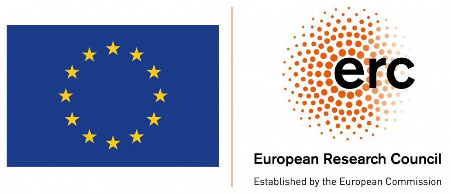
Webinar cycle in Hydrogeology and Geochemistry
HYDROGEOLOGY GROUP (Associated Unit CSIC-UPC, Barcelona)
Date: Thursday, 2nd June 2022
Starting time: 15:00 pm (Central European Time)
Duration: 1h
Guest Speaker: Dario Sciandra, PhD student
Title: A three-dimensional hydro-mechanical modeling of shaly caprock for the CO₂ long-term periodic injection experiment (CO2LPIE)
live in: https://meet.google.com/snb-qdkn-eex (free of charge)
Abstract:
Understanding the coupled hydro-mechanical response of caprocks to CO₂ injection is crucial to guarantee the long-term containment of CO₂ in deep geological formations. To investigate the sealing capacity of Opalinus Clay as a representative caprock for geologic carbon storage, the CO₂ Long-term Periodic Injection Experiment (CO2LPIE) will be carried out at the Mont Terri rock laboratory for three decades in a highly monitored environment. The presence of bedding planes in Opalinus Clay is responsible for its anisotropic hydro-mechanical behavior.
Bedding planes with an almost uniform dip of ≈45° are observed at the experiment location. Here, we show the result of a coupled three-dimensional hydro-mechanical simulation to predict the rock response at CO2LPIE using a transverse isotropic model to reproduce the rock nature.
The hydro-mechanical properties that we use in our models have been measured in the laboratory. Opalinus Clay has permeabilities of 2.4·10-20 m2 and 0.8·10-20 m2 parallel and perpendicular to the bedding planes, respectively. The porosity is 0.125 and the capillary entry pressure equals 5 MPa. Mechanically, the Young’s modulus is 1.7 GPa along the bedding and 2.1 GPa normal to bedding with the Poisson’s ratio of 0.35 and 0.32, respectively.
We initialize the numerical simulation with in-situ measurements of the initial state of stress and pore pressure. We apply sinusoidal oscillations of the CO₂ pressure in the well at a mean pressure of 3 MPa, implying a mean overpressure of 1 MPa. The CO₂ injection creates a wave-form brine overpressure propagating into the formation, with CO₂ uniformly advancing into the rock dissolved into the brine through molecular diffusion. Since the induced capillary pressure is lower than the entry pressure, CO₂ does not appear in free phase inside the pores.
The liquid overpressure distribution is distorted by the hydraulic anisotropy. The pore pressure propagates through the domain with a lag time and an attenuation that progressively grow with distance from the source. As a result of the non-isotropic nature of Opalinus Clay, the attenuation and the lag time change with the direction and are found to be higher in the direction perpendicular to bedding. Simulation results indicate that in order to observe the periodic signal of the injection well, the observation wells should be placed at a distance shorter than 1 m from the injection well. The simulated pore pressure perturbation induces a poromechanical response of the rock that also aligns with the bedding planes. The induced perturbations in the effective stress are small, which ensures no damage to the caprock. We intend to infer the anisotropic hydro-mechanical properties of Opalinus Clay at the field scale through the analysis of the periodic signal at observation wells around the injection one.

